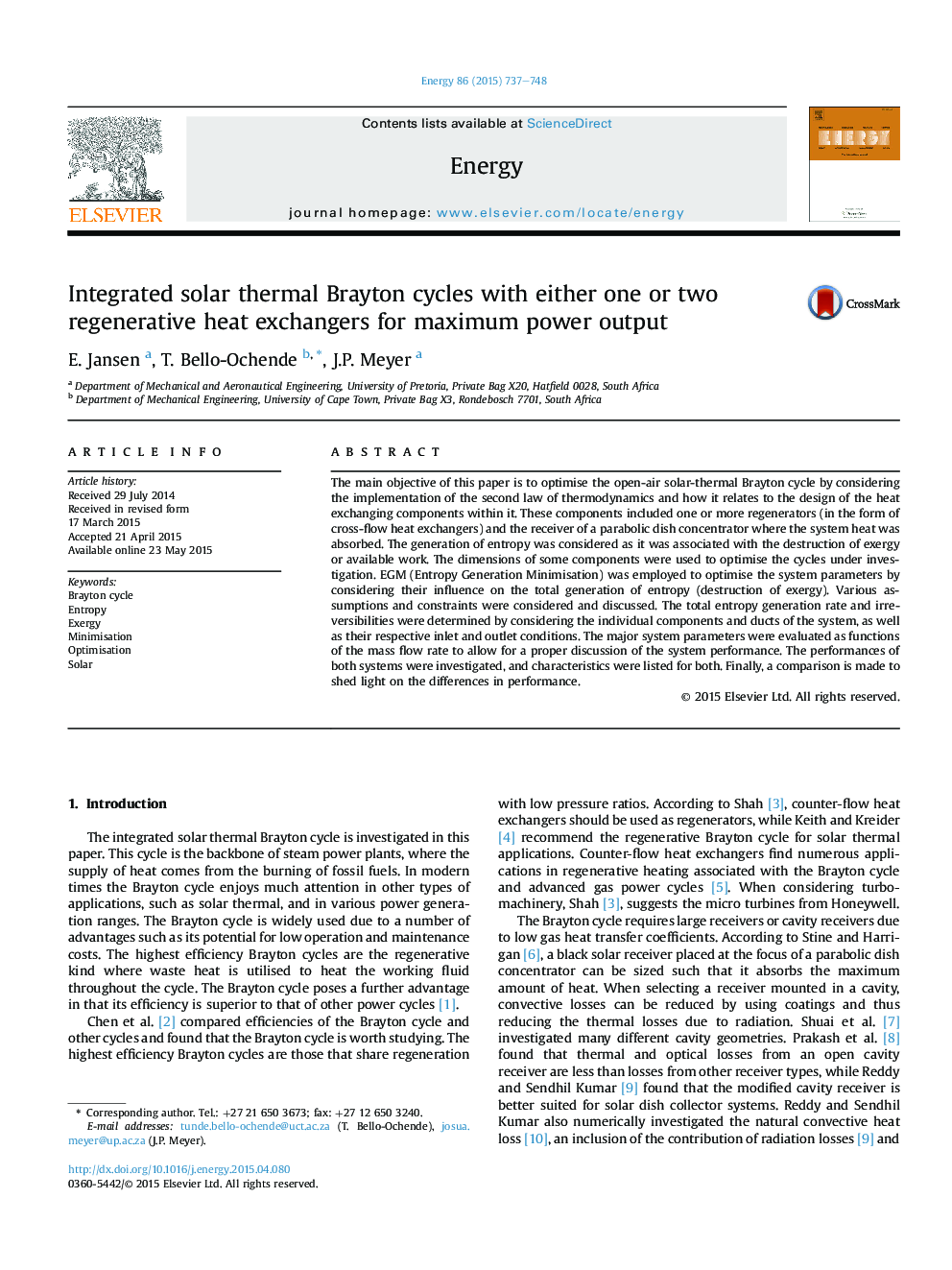| Article ID | Journal | Published Year | Pages | File Type |
|---|---|---|---|---|
| 1732277 | Energy | 2015 | 12 Pages |
•Implementation of the second law of thermodynamics.•Design of heat exchanging and collecting equipment.•Utilisation of Entropy Generation Minimization.•Presentation of a multi-objective optimization.•Raise efficiency with more regeneration.
The main objective of this paper is to optimise the open-air solar-thermal Brayton cycle by considering the implementation of the second law of thermodynamics and how it relates to the design of the heat exchanging components within it. These components included one or more regenerators (in the form of cross-flow heat exchangers) and the receiver of a parabolic dish concentrator where the system heat was absorbed. The generation of entropy was considered as it was associated with the destruction of exergy or available work. The dimensions of some components were used to optimise the cycles under investigation. EGM (Entropy Generation Minimisation) was employed to optimise the system parameters by considering their influence on the total generation of entropy (destruction of exergy). Various assumptions and constraints were considered and discussed. The total entropy generation rate and irreversibilities were determined by considering the individual components and ducts of the system, as well as their respective inlet and outlet conditions. The major system parameters were evaluated as functions of the mass flow rate to allow for a proper discussion of the system performance. The performances of both systems were investigated, and characteristics were listed for both. Finally, a comparison is made to shed light on the differences in performance.
